
Hollywood has always loved a successful formula; one that can guarantee success over and over again. Whether it is a successful genre (the Western) or character type (Jason Bourne), studios will take the basic blueprint of a successful genre, idea, story or character and replicate it, most of the time creating a substandard knockoff. Occasionally, what can be considered a knock off can actually lead to something original and remarkable.
In 1988, 20th Century Fox released a loose adaptation of the Roderick Thorp thriller Nothing Lasts Forever, the story of a bare foot cop taking on a group of German terrorists in a LA skyscraper.
The decision to cast Moonlight star Bruce Willis did not install much hope for the production, especially after big stars like Schwarzenegger, Stallone and Pacino all turned down the role. However, the film, titled Die Hard, was one of the highest grossing films of 1988 and helped launch the careers of stars Willis and Alan Rickman as well as director John McTiernan.
But what made Die Hard so successful?
Everything.
While the film was blessed with strong performances, strong direction and an airtight script, the film also had the right ingredients: a unassuming hero out of his depth, a gang of villains holding hostages, inept law enforcement/military assistance and a siege mentality. Very simple yet very effective. This prompted studios to replicate the formula, creating many cheap and inferior knockoffs. However, occasionally, someone gets the formula right and adds something completely new.
Even today, the formula is still in use as recently as 2013 with action thrillers Olympus has Fallen and White House Down, showing that the “Die Hard on/in a…” is still an effective formula.
10. Passenger 57 (1992)
AKA: ‘Die Hard on a Plane’
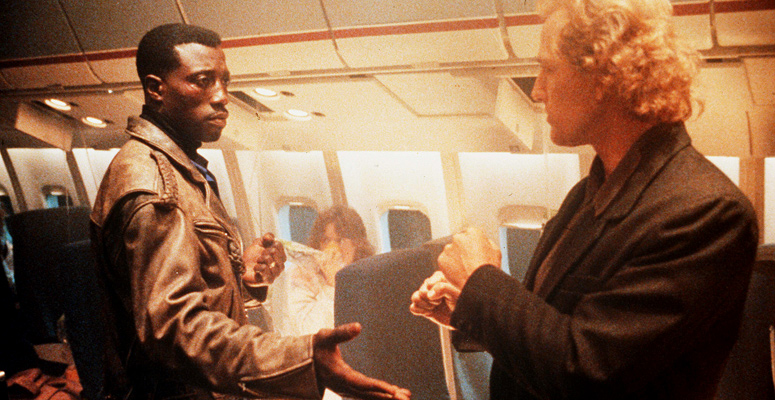
Air travel has always been tense experience for some. Fear of heights, turbulence, cramped conditions and security can make even the most average flight torture. The concept of a mid-air hijacking has always been a popular concept in action thrillers. While Executive Decision and the recent Non-Stop did a better job, Passenger 57 is still a solid film utilising the Die Hard formula.
The film follows the formula more faithfully than many of the other entries in this list, with Wesley Snipes playing a former police officer turned security consultant trapped on a flight with a psychotic terrorist freed by his men who in turn hijack the plane. Snipes’ John Cutter quickly finds himself out of his element, not only dealing with an army of terrorists, but also a police force that believes he is a hijacker.
The film helped launch Snipes’ career as an mainstream action hero, highlighted by some skilled Karate/Hapkido moves and memorable one liners (“Always bet on black”), but Cutter is a very different hero. McClane was a smart mouthed street brawler while Cutter was a Zen martial artist, haunted by his failure to prevent his wife’s death at the hands of a gunman. There is a difference, but it worked not only for the film, but also for Snipes himself.
9. Sudden Death (1995)
AKA: ‘Die Hard in a Stadium’
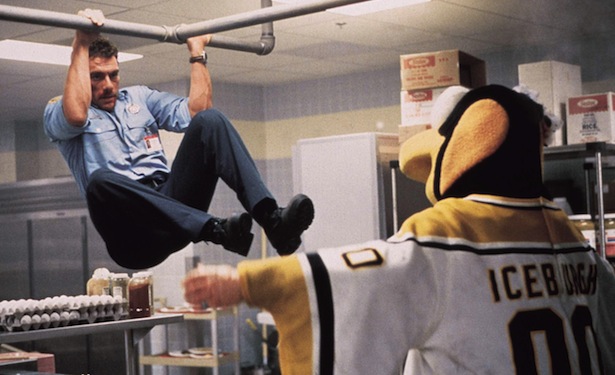
Even the Muscles from Brussels, Jean-Claude Van Damme, took advantage of the Die Hard formula, teaming up with underrated action director Peter Hyams. While the film was clearly a marketing ploy for the Pittsburgh Penguins (the story was conceived by Karen Elise Baldwin, wife of Penguins owner Howard Baldwin), it is a still a grand piece of escapism.
JCVD plays Darren McCord, a fire fighter haunted by his failure to save a little girl in a house fire. Off active duty, he works as a Fire Marshall for the Civic Arena during the NHL season. However, when terrorists, led by former CIA operative Joshua Fosse (Powers Booth), take the Vice President and threaten to blow up the stadium as a diversion for a robbery, the police are helpless. Luckily, McCord is on the scene and is ready to deliver some spinning roundhouse kicks to some terrorist faces.
While Van Damme’s McCord is quite different to McClane, being more of a quiet brooding hero, Sudden Impact includes a villain whose motives adhere very much to the Die Hard mold. Fosse was originally idealistic, seen through his service with the CIA before posing as a terrorist in order to commit a high stakes robbery right under the noses of the authorities.
Sudden Death may have been a critical and financial bomb back in 1995, but its reputation has steadily improved, now being considered one of Van Damme’s best work.
8. Home Alone (1990)
AKA: ‘Die Hard for Kids’
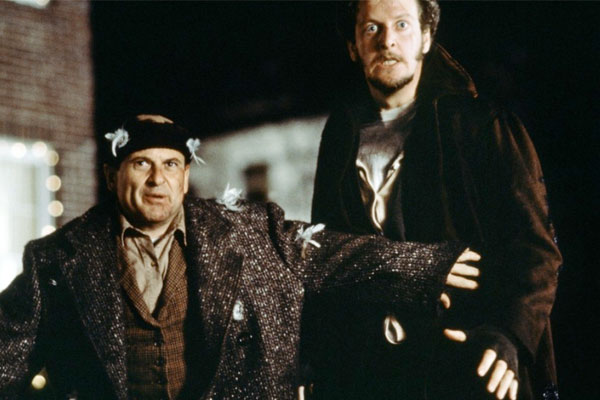
Just two years after the original Die Hard was released, same year as the release of the sequel, John Hughes released the similarly Christmas themed Home Alone. One can only imagine what it would have been like when 20th Century Fox was pitched an idea that essentially had the Die Hard formula marketed for kids.
Kevin McCallister is accidently left home alone after his family leave for a holiday to Paris. Kevin, believing that he made his family disappear, takes full advantage of his sudden emancipation, only to discover that his house is being targeted by a pair of bumbling robbers, prompting Kevin to find his inner MacGyver.
There are some formula tropes that are absent from Home Alone, with the film more akin to a siege thriller rather than a hostage situation. Kevin, unlike McClane, is not the underdog in this story; he is just perceived as such due to his age. This is where the humour is found. Kevin defies expectation, constantly forcing both Harry and Marv into painful and humiliating situations.
While the various injuries sustained by the Wet Bandits is played off as harmless, the film is actually quite violent, with one MD commenting that both men would have been killed at least twice by the injuries they sustained, especially with the final blows to the head from a snow shovel. Home Alone, however, proves that a formula designed for action films can be manipulated to fit perfectly with a comedy.
7. Cliffhanger (1993)
AKA: ‘Die Hard on a Mountain’
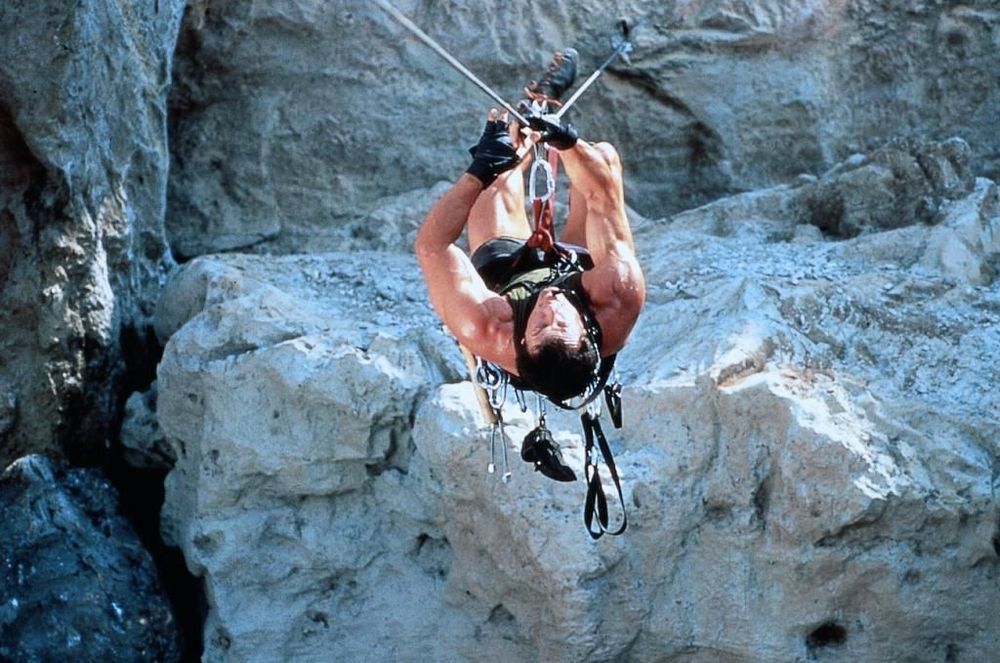
Sylvester Stallone’s career has been made up of various ups and downs. Some films are action classics, others are best forgotten by everyone. Cliffhanger is one of the former. Iconic setting, memorable action, great characters and even greater villains.
Once again the setup is simple. A team of mercenaries pull of a mid-air robbery but crash in the Colorado Rockies, losing over $100 million in three briefcases. When they attempt to use several rescue climbers as guides to their loot, they must race against Stallone, who hopes to reclaim the loot first as a bargaining chip for his friends.
Stallone, who also wrote the script, moulds the formula to match his on screen persona, creating a wounded character struggling with himself and those around him, suddenly spurned back into action. Apart from the location, one of the most obvious comparisons is the villain. John Lithgow’s Eric Qualen is a tour de force.
Much like Hans Gruber, he is a former idealist who disappeared, went rogue and is now trying to seize a big payday for himself. On top of the hammy English accent and his tendency to knock off his own men, Qualen is the perfect antithesis to Stallone’s Gabe Walker.
6. Air Force One (1997)
AKA: ‘Die Hard on the President’s Plane’
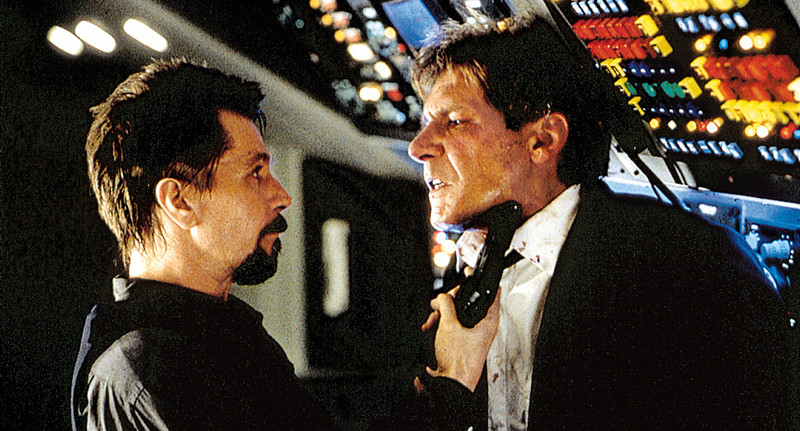
Setting a hostage thriller on board a plane has always been difficult. After all, it is a confined and small environment with few places to hide and any physical confrontation can alert all the hijackers. So how does a film overcome this problem? Passenger 57 included scenes on board the flight as well as one the ground. Air Force One, however, keeps the action in the air.
Following the capture of a rogue Soviet-era general Kazakhstan, Air Force One is seized by six loyalists who demand his release. But the White House realise they have a man on board: the President himself. However, Harrison Ford does not play any ordinary President. As revealed by the Chairman of the Joint Chiefs, the President is a Medal of Honor winner who flew combat missions in Vietnam. If anyone can take down the Russian villains, it is him.
Under the direction of Wolfgang Peterson, Air Force One is laid out to the audience like a jigsaw puzzle. We are fed the layout of the plane scene by scene, allowing Ford’s President Marshall to sneak around, foiling the plot of the hijackers. Like the others on this list, one of the key strengths of this film is the villain. Gary Oldman’s Ivan Korshunov is truly terrifying as he is still believer. He has not sold out for the money. His loyalty to his commanding officer will push him to use any methods to succeed.